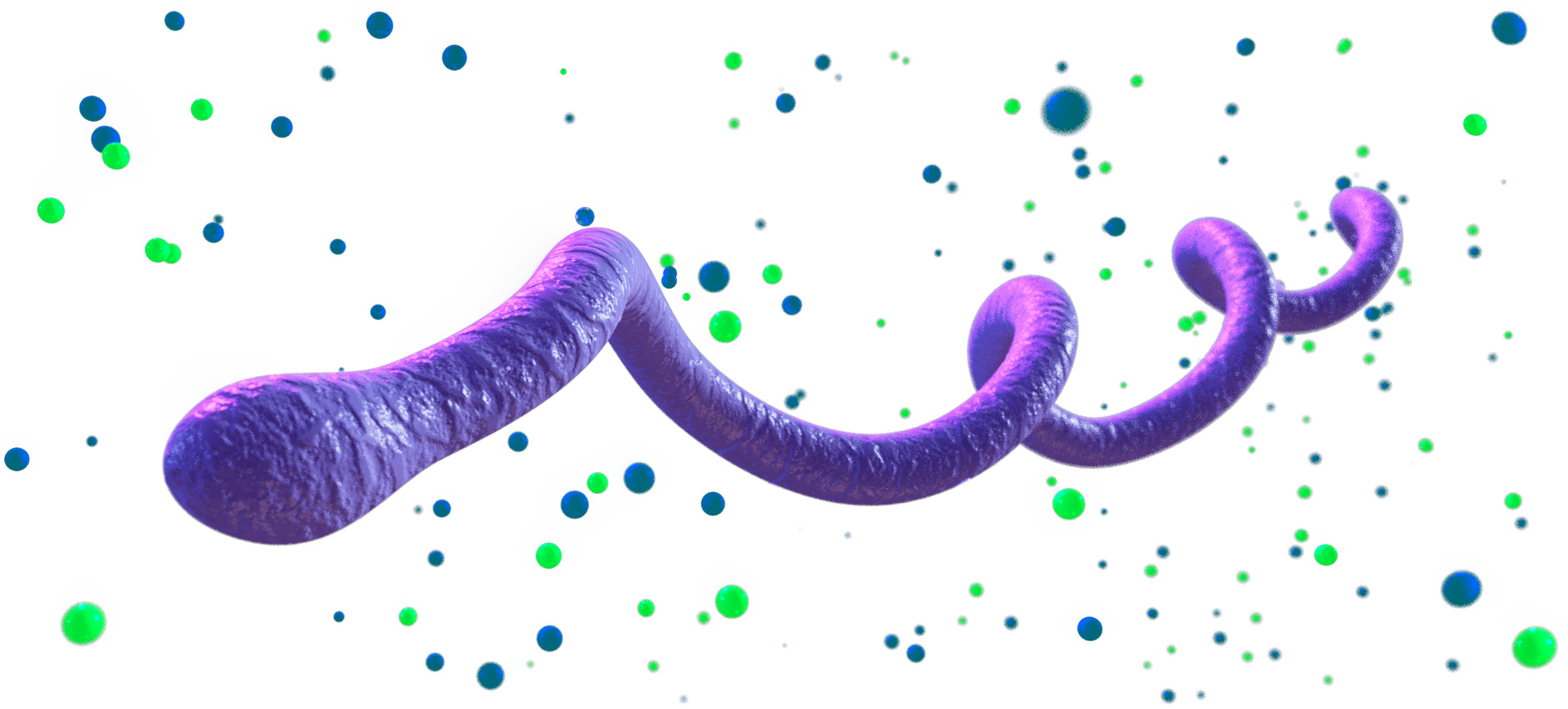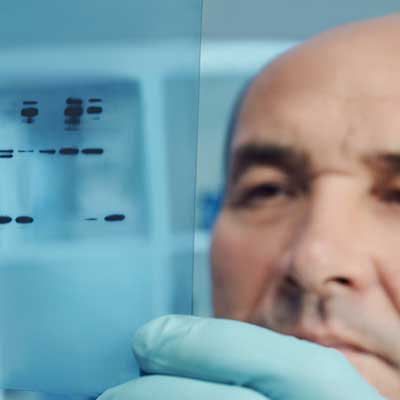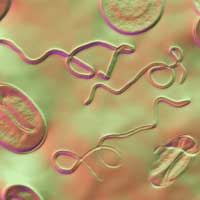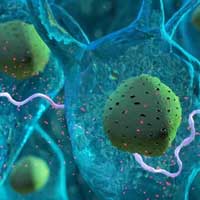How Lyme Disease and Chronic Infections Can Lead to Cancer

Envita Medical Centers has been treating cancer for nearly two decades, in that time they have tested and reviewed thousands of patients and their potential causes of cancer. This accumulation of clinical data has allowed Envita to notice a recurring trend between cancer patients and underlying chronic infections, leading to a published paper on the subject in the 2014 Open Journal of Medical Microbiology titled Cancer and Infectious Causes. Data is very clear that specific cancers are linked to certain infections, many people are aware that infections like HPV can lead to cervical cancer, and Epstein Barr can cause Hodgkin's Lymphoma. What you may not know is that recent data suggests 25% of all infections may potentially lead to cancer and this statistic, in our clinical experience, could be an underestimate. Patients with chronic Lyme disease may not realize the potential cancer risk they are exposing themselves to. A surprisingly high number of Envita's patients with late-stage cancer test positive for Lyme disease as well as its primary or secondary coinfections.
Disclaimer: Individual results will vary. Envita makes no guarantees for outcomes. Each patient case is unique. Please consult your doctor before making any changes to your medical treatment. Not every patient is a candidate for care or achieves these results. Treatments used in this case may not all be FDA approved for the treatment of this condition.
Dr. Prato remarks about Envita's experience investigating the link between infections and cancer, “When we first started testing our patients we couldn't believe that over 90% of late-stage cancer patients would have infection etiology connected to either causation and/or complication leading to cancer growth factors and/or immune impairment.”
Lyme Disease's Role in Cancer Development
Lyme disease is a complicated bacterial infection that is often seen accompanied by many other co-infections, this heightened number of infections could be making patients more susceptible to cancer. Infections have been shown to have three major modes of either causing or assisting in tumor growth, they cause inflammation, depress the immune system, and they can alter DNA causing mutations in the cell. Fortunately, Envita has developed patient specific and targeted treatment plans for Lyme disease and many of its coinfections, reducing the risk of developing cancer from infections for their patients.
Lyme disease patients may be very susceptible to cancer as Lyme can directly or indirectly cause all three of the mechanics that lead to tumor growth. Lyme disease and it coinfections directly cause inflammation of muscle and nerve tissue through endotoxins, biotoxins, and neurotoxins released by the bacterial infection. Lyme and its co-infections can severely depress the immune system making the body more susceptible to viral infections which can alter cellular DNA leading to cancer in a process known as oncogenesis. It is important to understand that Lyme disease is rarely seen alone and is almost always accompanied by other infections which must be addressed for proper treatment and cancer prevention.
Lyme Disease and Co-Infections Assist in Immune Suppression That May Lead to Cancer
When a tick bites and passes Lyme disease, there is a high chance it is going to pass whatever viral, fungal, parasitic, and bacterial infections it has as well. After Lyme and the co-infections have a chance to propagate in the patient's body the immune system will start to become over taxed trying to fight off the multitude of infections and will even start to attack the body's own cells as the biotoxins and endotoxins confuse it. This leads to a highly compromised immune system that is now susceptible to opportunistic infections that intern further depress the immune system. A healthy immune system identifies and destroys a countless number of preliminary cancer cells every day; cancer cell growth is a natural process that occurs when a cell's DNA begins to degrade. Normally, the immune system identifies these cancer cells and kills them before they reproduce spreading their mutated genes. In simple terms, when the immune system is compromised by Lyme and its co-infections, it can become increasingly more unlikely to rid the body of these naturally occurring cancer growths, making Lyme disease patients more susceptible to developing cancer. Lyme does not only depress the immune system though; it also employs endotoxins, biotoxins and neurotoxins that cause chronic inflammation which assists in the spread of cancer.

Inflammation and Carcinogenic Toxins
Inflammation can cause an environment that has an increase in oxidative stress, free-radicals caused by the oxidative stress create chain reactions within molecules in the body leading to many problems including the damage of cells. If these free-radical reactions occur in the nucleus of the cell where the DNA resides it may result in cancer. Lyme and its co-infections release various toxins into the body, the job of these toxins is to inhibit neurological and hormonal signaling to shut down the body's defense mechanisms so the infection can feed on the body's healthy tissue. The inflammation caused by the endotoxins and neurotoxins from Lyme disease and its coinfections may leave the patient more susceptible to develop cancer by producing an environment that is more likely to experience oxidative stress and may lead to abnormal gene regulation that could result in cancer. Early signals of Lyme disease linked inflammation may be seen in the brain and are common in patients experiencing Neuroborreliosis. A condition where borrelia, the Lyme disease bacteria, crosses the blood-brain barrier and enters the brain. Lyme is a complicated disease that can lead to cancer through inflammation and carcinogenic toxins but it can also make the body more susceptible to viruses that can cause oncogene changes resulting in cancer formation.
Oncogene changes are changes to a gene that may result in cancer. Viruses are known to cause oncogenesis because they infiltrate cells and insert their own RNA to reprogram the cell and make it a factory for creating more viruses. This changing of the cells genes by the virus may result in the cell becoming cancerous. It is common for people to have viral infections that are suppressed and remain dormant in a healthy immune system with no signs or symptoms of infection. However, these pre-Lyme viruses can become active when the immune system becomes suppressed by the disease and its co-infections. Lyme disease has many actions from which it can make the body more susceptible to viral infection and intern oncogene changes and cancer, but with proper diagnosis and treatment of Lyme disease and its co-infections the risk of developing cancer can be mitigated when the clinician knows what to look for.
Lyme disease is associated with several infections and coinfections, in skin infected by acrodermatitis chronica atrophicans (ACA) associated with Lyme disease, evidence has been found that suggest Lyme disease could be a direct cause of a skin cancer called primary cutaneous B-cell lymphoma (PCBCL). Also, in patients with PCBCL, Lyme bacteria can be found in their lesions. Though this one connection between Lyme bacteria and cancer is scary, when adding it to the list of secondary and primary Lyme coinfections that link to cancer a terrifying picture begins to form. Lyme disease can lead to all three of the actions correlated with infection leading to cancer; It causes inflammation, depresses the immune system, and promotes infection that can lead to alterations of DNA. Though these are the actions that may lead to cancer it is important to remember that it is Lyme diseases ability to expose the body to so many infections that make it a pathway for cancer. Envita has been treating Lyme disease for nearly two decades and is experienced with diagnosing and treating not only Lyme but the many coinfections that accompany it. With proper identification, reduction of inflammation, and restoration of the immune system, treatment of Lyme disease and its coinfections can be achieved lowering the risk of it causing cancer. We at Envita have a goal to improve the lives of our patients and bring them back to full vitality, please contact us at envita.com or call us at 1-866-830-4576 with any further questions, we are here to help and would be glad to do so, and for a list of infections and their links to cancers click here.






















